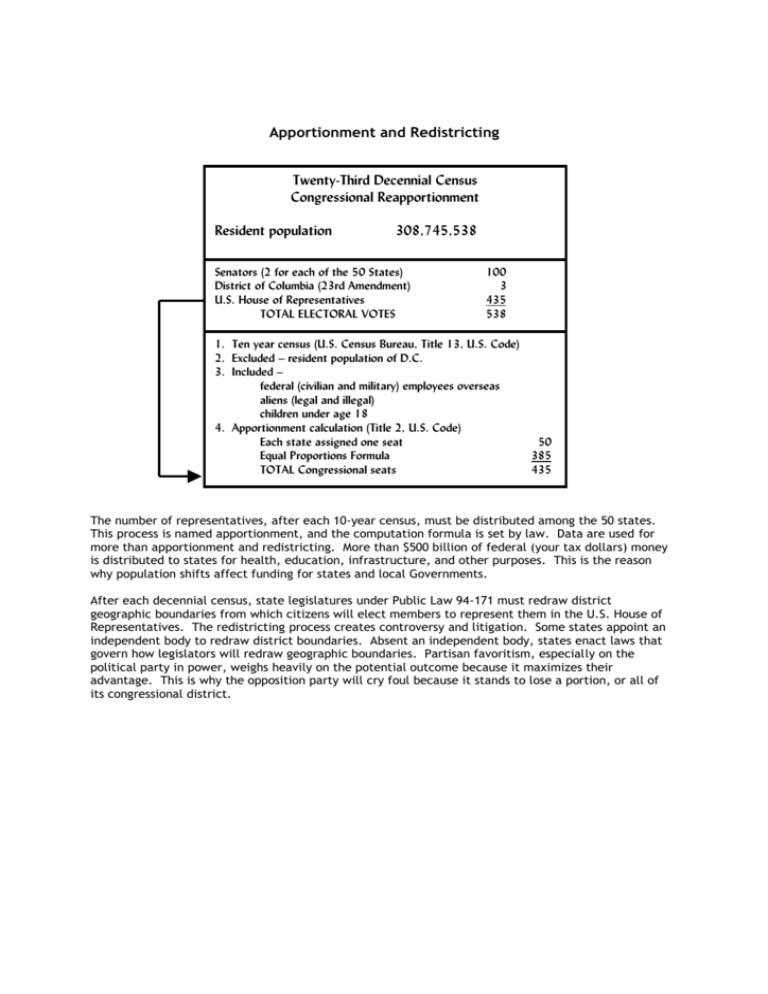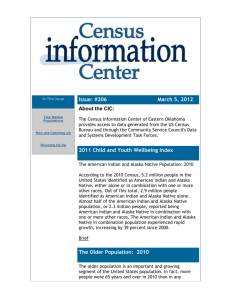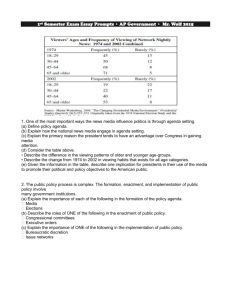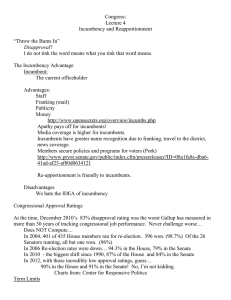Apportionment and Redistricting Twenty
advertisement

Apportionment and Redistricting Twenty-Third Decennial Census Congressional Reapportionment Resident population 308,745,538 Senators (2 for each of the 50 States) District of Columbia (23rd Amendment) U.S. House of Representatives TOTAL ELECTORAL VOTES 100 3 435 538 1. Ten year census (U.S. Census Bureau, Title 13, U.S. Code) 2. Excluded – resident population of D.C. 3. Included – federal (civilian and military) employees overseas aliens (legal and illegal) children under age 18 4. Apportionment calculation (Title 2, U.S. Code) Each state assigned one seat 50 Equal Proportions Formula 385 TOTAL Congressional seats 435 The number of representatives, after each 10-year census, must be distributed among the 50 states. This process is named apportionment, and the computation formula is set by law. Data are used for more than apportionment and redistricting. More than $500 billion of federal (your tax dollars) money is distributed to states for health, education, infrastructure, and other purposes. This is the reason why population shifts affect funding for states and local Governments. After each decennial census, state legislatures under Public Law 94-171 must redraw district geographic boundaries from which citizens will elect members to represent them in the U.S. House of Representatives. The redistricting process creates controversy and litigation. Some states appoint an independent body to redraw district boundaries. Absent an independent body, states enact laws that govern how legislators will redraw geographic boundaries. Partisan favoritism, especially on the political party in power, weighs heavily on the potential outcome because it maximizes their advantage. This is why the opposition party will cry foul because it stands to lose a portion, or all of its congressional district.











